Monthly Archives: June 2024

 My daughter, Corrie Petersen has spent the last year working in the career she was born to be in…nursing. Since 2005, when Corrie began helping with the caregiving of her grandparents, she knew that she was destined to go to nursing school. The timing wasn’t right then, but when the time was right, she went to nursing school and graduated Magna Cum Laude from Nightingale College receiving her Bachelor of Science in Nursing (BSN). Corrie waited a long time for this degree. I’m thankful that she was there for me when I needed her help to care for her grandparents. I couldn’t have done it without her and the rest of my family. All those prior obligations are done…sadly, because the grandparents are in Heaven now. Nevertheless, when they needed her, she was there as a part of the village of caregivers we needed to care for them. They and we will be forever grateful. Now, it is Corrie’s time, and she is having the time of her life working in the career she loves. There is an old quote by Mark Twain, “Find a job you enjoy doing, and you’ll never have to work a day in your life.” That is so true of Corrie, but don’t get the idea that you won’t be tired at the end of the shift, because in nursing…you will, but it’s a really good kind of tired.
My daughter, Corrie Petersen has spent the last year working in the career she was born to be in…nursing. Since 2005, when Corrie began helping with the caregiving of her grandparents, she knew that she was destined to go to nursing school. The timing wasn’t right then, but when the time was right, she went to nursing school and graduated Magna Cum Laude from Nightingale College receiving her Bachelor of Science in Nursing (BSN). Corrie waited a long time for this degree. I’m thankful that she was there for me when I needed her help to care for her grandparents. I couldn’t have done it without her and the rest of my family. All those prior obligations are done…sadly, because the grandparents are in Heaven now. Nevertheless, when they needed her, she was there as a part of the village of caregivers we needed to care for them. They and we will be forever grateful. Now, it is Corrie’s time, and she is having the time of her life working in the career she loves. There is an old quote by Mark Twain, “Find a job you enjoy doing, and you’ll never have to work a day in your life.” That is so true of Corrie, but don’t get the idea that you won’t be tired at the end of the shift, because in nursing…you will, but it’s a really good kind of tired. 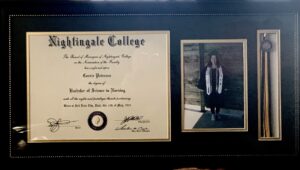
During Corrie’s school years and continuing into this first year as a nurse, she had a pretty busy personal life. In that time, she has gained two beautiful daughters-in-law, Karen and Athena. She has also gained five grandchildren (with one more on the way), Cambree, Caysen, Justin, Axel, and Cyler. She couldn’t be happier with her family. She and her husband, Kevin love being grandparents and in-laws, and they can wait for the new arrival. The last seven years of anticipation and pregnancies have been so special for Corrie and Kevin.
Corrie and Kevin have also been doing some renovations on their home, and while I haven’t seen it yet, because it isn’t finished, I have been seeing some of the things they have purchased for it, and I think it is going to be stunning. Everything is very cool, and their home is going to be perfect for them. Since nursing 
 school is over, Corrie has been doing a lot of reading, and one of the things they purchased for the home is a bookcase to hold all the books Corrie has purchased. It’s funny…after all the reading Corrie did during nursing school, she still finds that she loves to read, although these days it more novels than medical books. I’m sure she always will love to read. Today is Corrie’s birthday. Happy birthday Corrie!! Have a great day!! We love you!!
school is over, Corrie has been doing a lot of reading, and one of the things they purchased for the home is a bookcase to hold all the books Corrie has purchased. It’s funny…after all the reading Corrie did during nursing school, she still finds that she loves to read, although these days it more novels than medical books. I’m sure she always will love to read. Today is Corrie’s birthday. Happy birthday Corrie!! Have a great day!! We love you!!
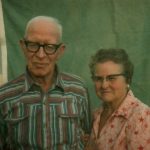
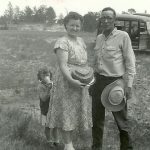 My husband’s grandmother, Nettie Knox was six months older that his grandfather, Bob Knox, and she loved that fact. I never really thought of her as a “teaser” kind of a person, but when it came to picking on her husband a little bit, I find that she was pretty good at it. Every year, on her birthday, she told him that she was now older and wiser than he was. She teased him about that for six months, until his birthday, which made them the same age again. Then, she couldn’t say that she was older anymore…so it stands to reason that she wasn’t wiser either. Grandpa put up with her teasing good-naturedly, even though he probably wouldn’t have allowed that same teasing from just anyone. I suppose that’s what love does. It allows a little more from the one you love, than would be allowed for others.
My husband’s grandmother, Nettie Knox was six months older that his grandfather, Bob Knox, and she loved that fact. I never really thought of her as a “teaser” kind of a person, but when it came to picking on her husband a little bit, I find that she was pretty good at it. Every year, on her birthday, she told him that she was now older and wiser than he was. She teased him about that for six months, until his birthday, which made them the same age again. Then, she couldn’t say that she was older anymore…so it stands to reason that she wasn’t wiser either. Grandpa put up with her teasing good-naturedly, even though he probably wouldn’t have allowed that same teasing from just anyone. I suppose that’s what love does. It allows a little more from the one you love, than would be allowed for others.
There were a number of things that gave grandma that extra little bit of pleasure. One of the biggest came w
 hen I gave birth to her first great grandchild, Corrie Petersen. I didn’t realize it at the time (I was not thinking about the date), but the next day, when my in-laws brought Grandma in to meet her first great grandchild. Her first words to me were, “She was born on my birthday!!” She could hardly contain her glee. That day began 15 years of sharing their special day. It was something they both loved, and not a birthday goes by that Corrie doesn’t feel just a little bit lonely, because her birthday twin isn’t there to celebrate with her. Of course, that couldn’t be, because Grandma would have been 116 years old this year. That wouldn’t have been possible, of course, but she lives on in our memories…and especially in Corrie’s heart.
hen I gave birth to her first great grandchild, Corrie Petersen. I didn’t realize it at the time (I was not thinking about the date), but the next day, when my in-laws brought Grandma in to meet her first great grandchild. Her first words to me were, “She was born on my birthday!!” She could hardly contain her glee. That day began 15 years of sharing their special day. It was something they both loved, and not a birthday goes by that Corrie doesn’t feel just a little bit lonely, because her birthday twin isn’t there to celebrate with her. Of course, that couldn’t be, because Grandma would have been 116 years old this year. That wouldn’t have been possible, of course, but she lives on in our memories…and especially in Corrie’s heart.
I will always remember Grandma’s sweet nature. She was always kind and happy. I don’t recall a time when she wasn’t in a good mood. Oh, I’m sure there were times when she wasn’t in a good mood, but she kept that 
 pretty hidden. She was a peacemaker. Even if she might have been upset about something, she wouldn’t show that to people in public. She controlled herself too much to do that. She was a woman who lived by a certain…code, if you will. There was a right way to do something, and a wrong way to do something. She did her best to do things right…to exhibit behavior in keeping with a sense of decorum. Grandma always tried to live up to a certain standard, and I think she did pretty good with that. Today is the 116th anniversary of Grandma Knox’s birth. Happy birthday in Heaven Grandma Knox. We love and miss you very much.
pretty hidden. She was a peacemaker. Even if she might have been upset about something, she wouldn’t show that to people in public. She controlled herself too much to do that. She was a woman who lived by a certain…code, if you will. There was a right way to do something, and a wrong way to do something. She did her best to do things right…to exhibit behavior in keeping with a sense of decorum. Grandma always tried to live up to a certain standard, and I think she did pretty good with that. Today is the 116th anniversary of Grandma Knox’s birth. Happy birthday in Heaven Grandma Knox. We love and miss you very much.
 In the world of criminal justice, you might think that the punishment should fit the crime, and in that case, murder should get the death penalty. Of course, no one would dispute the fact that there could be extenuating circumstances. Sometimes, the murder was accidental, or the perpetrator was truly insane, whether temporarily or permanently. Those aren’t the common reasons for murder though. Nevertheless, there are those who believe that there shouldn’t be a death penalty for any reason. They call it cruel and unusual punishment, even if the perpetrator is not sorry for their crime, but the reality is that the killer took a life, and that should usually bring the death penalty.
In the world of criminal justice, you might think that the punishment should fit the crime, and in that case, murder should get the death penalty. Of course, no one would dispute the fact that there could be extenuating circumstances. Sometimes, the murder was accidental, or the perpetrator was truly insane, whether temporarily or permanently. Those aren’t the common reasons for murder though. Nevertheless, there are those who believe that there shouldn’t be a death penalty for any reason. They call it cruel and unusual punishment, even if the perpetrator is not sorry for their crime, but the reality is that the killer took a life, and that should usually bring the death penalty.
Over the years, there have been multiple pushes by activist groups that were against the death penalty under any circumstances. Finally, in the case of Furman v. Georgia, the US Supreme Court ruled by a vote of 5-4 that capital punishment, as it is currently employed on the state and federal level, is unconstitutional. In that case, the majority of the judges held that, “in violation of the Eighth Amendment to the Constitution, the death penalty qualified as 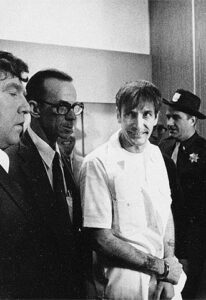 ‘cruel and unusual punishment,’ primarily because states employed execution in ‘arbitrary and capricious ways,’ especially in regard to race.” That decision was the first time that the nation’s highest court had ruled against capital punishment. In the case, they didn’t say that the death penalty, in and of itself, was unconstitutional, but rather left room for new legislation that could make death sentences constitutional again. These included the development of standardized guidelines for uries that decide sentences. Because there was room for changes to the way things were done, the decision was not an outright victory for opponents of the death penalty.
‘cruel and unusual punishment,’ primarily because states employed execution in ‘arbitrary and capricious ways,’ especially in regard to race.” That decision was the first time that the nation’s highest court had ruled against capital punishment. In the case, they didn’t say that the death penalty, in and of itself, was unconstitutional, but rather left room for new legislation that could make death sentences constitutional again. These included the development of standardized guidelines for uries that decide sentences. Because there was room for changes to the way things were done, the decision was not an outright victory for opponents of the death penalty.
Finally, in 1976, with 66 percent of Americans still supporting capital punishment, the Supreme Court acknowledged that progress had been made in jury guidelines and reinstated the death penalty under a “model of guided discretion.” Then in 1977, Gary Gilmore, a career criminal who had murdered an elderly couple simply because they would not lend him their car, was the first person to be executed since the end of the ban. Gilmore was defiant…facing a firing squad in Utah. His last words to his executioners before they shot him through the heart were, “Let’s do it.” Gilmore was one of those criminals who had no respect for life…not even his own. He was a brutal killer, and he died a justified death. He wasn’t brave at the time of his death. He was 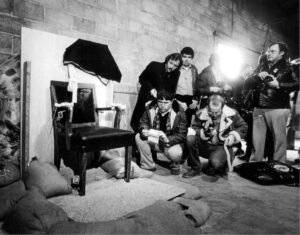 just stubborn and defiant. I suppose he might have seen himself as a martyr, but the reality was that he was simply a cold-blooded criminal, who got what he deserved…the same thing he gave to his victims. Some of his victims even cooperated, but it made no difference. He killed them anyway. He received exactly what he should have…and he wanted it too. During the time Gilmore was on death row awaiting his execution, he attempted suicide twice; the first time on November 16 after the first stay was issued, and again one month later on December 16. On the day of his execution, he was smiling as he was led to the chair the strapped him to for his execution. Gilmore was put to death on January 17, 1977.
just stubborn and defiant. I suppose he might have seen himself as a martyr, but the reality was that he was simply a cold-blooded criminal, who got what he deserved…the same thing he gave to his victims. Some of his victims even cooperated, but it made no difference. He killed them anyway. He received exactly what he should have…and he wanted it too. During the time Gilmore was on death row awaiting his execution, he attempted suicide twice; the first time on November 16 after the first stay was issued, and again one month later on December 16. On the day of his execution, he was smiling as he was led to the chair the strapped him to for his execution. Gilmore was put to death on January 17, 1977.

 My grandnephew, Chris Spicer graduated from high school last year, and now, in college, he is doing great. He is studying graphic design, and he has a real knack for it. Chris, like most young people his age, is very good with technology. I wasn’t totally sure what graphic design was all about. This is what I found. “Graphic design is a profession, academic discipline, and applied art whose activity consists in projecting visual communications intended to transmit specific messages to social groups, with specific objectives. Graphic design is an interdisciplinary branch of design and of the fine arts. Its practice involves creativity, innovation and lateral thinking using manual or digital tools, where it is usual to use text and graphics to communicate visually.” As to what fields will be open to Chris, I found, “The role of the graphic designer in the communication process is that of the encoder or interpreter of the message. They work on the interpretation, ordering, and presentation of visual messages. Usually, graphic design uses the aesthetics of typography and the compositional arrangement of the text, ornamentation, and imagery to convey ideas, feelings, and attitudes beyond what language alone expresses. The design work can be based on a customer’s demand, a demand that ends up being established linguistically, either orally or in writing, that is, that graphic design transforms a
My grandnephew, Chris Spicer graduated from high school last year, and now, in college, he is doing great. He is studying graphic design, and he has a real knack for it. Chris, like most young people his age, is very good with technology. I wasn’t totally sure what graphic design was all about. This is what I found. “Graphic design is a profession, academic discipline, and applied art whose activity consists in projecting visual communications intended to transmit specific messages to social groups, with specific objectives. Graphic design is an interdisciplinary branch of design and of the fine arts. Its practice involves creativity, innovation and lateral thinking using manual or digital tools, where it is usual to use text and graphics to communicate visually.” As to what fields will be open to Chris, I found, “The role of the graphic designer in the communication process is that of the encoder or interpreter of the message. They work on the interpretation, ordering, and presentation of visual messages. Usually, graphic design uses the aesthetics of typography and the compositional arrangement of the text, ornamentation, and imagery to convey ideas, feelings, and attitudes beyond what language alone expresses. The design work can be based on a customer’s demand, a demand that ends up being established linguistically, either orally or in writing, that is, that graphic design transforms a 
 linguistic message into a graphic manifestation.” It sounds like very interesting work, with lots of potential. Chris is taking some summer classes, so that he can graduate next spring. It’s an ambitious goal, but he can do it.
linguistic message into a graphic manifestation.” It sounds like very interesting work, with lots of potential. Chris is taking some summer classes, so that he can graduate next spring. It’s an ambitious goal, but he can do it.
While he is in college, Chris is also working at Ace Hardware. He has worked there before, in Rawlins, and now that he and his mom, Andrea Beach moved to Casper, it seemed like the perfect job for his college days. Chris is very good at his job. He gives great customer service, and always with a smile. With his background in color and design, Chris has become the go-to paint guy. With his art classes, he has become very knowledgeable with color theory and how mixing paint works. That is a valuable asset in the world of paint colors.
Chris is still close friends with a group of friends from high school, and even though he has moved away, they make frequent trips to Casper to visit him. Often, when high school is over, friends go their own way, and drift 
 apart. It’s hard to keep up with old friends, because everyone has their own lives. Chris’ friends are the exception, but that could change as the years go by, as we all know. It’s nice that they can remain close, for now anyway. Chris still hangs out quite a bit with his mom too. They have been close all his life, and they enjoy doing things together, like concerts, movies, hikes, and walks. He also likes to spend time with his cousins, Xander, Zack, and Isaac Spethman, as well as their sister, Aleesia Spethman. And each year, Chris, his mom, and his grandma, Caryl Reed take a trip to the Black Hills. It’s been a long-standing tradition that they love doing each year…and this year it is on his birthday, so that’s extra special. Today is Chris’ birthday. Happy birthday Chris! Have a great day! We love you!
apart. It’s hard to keep up with old friends, because everyone has their own lives. Chris’ friends are the exception, but that could change as the years go by, as we all know. It’s nice that they can remain close, for now anyway. Chris still hangs out quite a bit with his mom too. They have been close all his life, and they enjoy doing things together, like concerts, movies, hikes, and walks. He also likes to spend time with his cousins, Xander, Zack, and Isaac Spethman, as well as their sister, Aleesia Spethman. And each year, Chris, his mom, and his grandma, Caryl Reed take a trip to the Black Hills. It’s been a long-standing tradition that they love doing each year…and this year it is on his birthday, so that’s extra special. Today is Chris’ birthday. Happy birthday Chris! Have a great day! We love you!
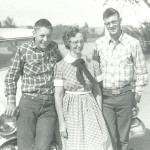
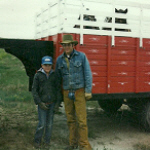 My husband’s uncle, Bernard “Butch” Hein was a cattle rancher in Forsyth, Montana. Butch came into ranching by birth, coming from a long line of ranchers. Butch raised cattle, and since I have been able to eat and later buy some of the beef he raised, I can tell you that it tasted excellent. I think most of us thought that the iconic rancher would always be there, but on October 13, 2023, that all came to a tragic end, when Uncle Butch was killed in a car accident. It was such a shock to so many people. You are never prepared to lose a loved one, but when it happens to someone who was still so full of life, it is even more of a shock.
My husband’s uncle, Bernard “Butch” Hein was a cattle rancher in Forsyth, Montana. Butch came into ranching by birth, coming from a long line of ranchers. Butch raised cattle, and since I have been able to eat and later buy some of the beef he raised, I can tell you that it tasted excellent. I think most of us thought that the iconic rancher would always be there, but on October 13, 2023, that all came to a tragic end, when Uncle Butch was killed in a car accident. It was such a shock to so many people. You are never prepared to lose a loved one, but when it happens to someone who was still so full of life, it is even more of a shock.
Butch never really wanted to be anything else but a rancher, but of course, when he graduated from high school the Vietnam War was in full swing, and Butch was drafted into the Navy. That era was a tough time for a lot of people. Many people felt like the United States was in a war that was a “no-win situation,” and we should  get out of it. There were protests and a whole lot of hate going around. There were people who dodged the draft by running to Canada. Not Butch though. He and his older brother, Eddie both served. Eddie was in the Army. The brothers served honorably, and both came home. They loved their country, and we are so proud of both of them.
get out of it. There were protests and a whole lot of hate going around. There were people who dodged the draft by running to Canada. Not Butch though. He and his older brother, Eddie both served. Eddie was in the Army. The brothers served honorably, and both came home. They loved their country, and we are so proud of both of them.
After his discharge, Butch came home, met, and married Bonnie Wertz. They started a family, and for a time everything was great. They had a son and were expecting a daughter, but Bonnie was sick. They hoped to have their daughter and get treatment to save Bonnie. Unfortunately, Butch lost both of them. Then, it was just Butch and his son, Scott. Still, they were together, and when he grew up, Scott got married to Terri Wiederrick. They had three beautiful children, Laura, Carson, and Lindsey. Scott and his son Carson both wanted to be in ranching, and now, they have taken over the ranch, which is bittersweet for them. Their dream was to take over the ranch someday, but the plan was to be when Butch retired, not this way. Now, the ranch belongs to Scott, but there is something missing. His dad was supposed to be there in an advisory capacity if nothing else.
Scott and his family aren’t the only ones who feel the loss. Nor is the rest of our family. Butch used to go to the 
 same hang out most mornings to meet up with friends for coffee and breakfast. I’ve heard that there are people in that group who just can’t go anymore. It just hurts too much. I suppose some of those people will eventually go back, and I would assume that Butch wouldn’t want them to stop going. Still, it may be a while before they go back, because I think it will be a very long time before we will be able to face the loss and how it happened. Today would have been Butch’s 79th birthday. Happy birthday in Heaven Uncle Butch. We love and miss you very much.
same hang out most mornings to meet up with friends for coffee and breakfast. I’ve heard that there are people in that group who just can’t go anymore. It just hurts too much. I suppose some of those people will eventually go back, and I would assume that Butch wouldn’t want them to stop going. Still, it may be a while before they go back, because I think it will be a very long time before we will be able to face the loss and how it happened. Today would have been Butch’s 79th birthday. Happy birthday in Heaven Uncle Butch. We love and miss you very much.

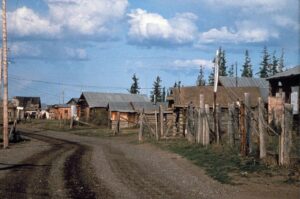 Fort Yukon is a city in the Yukon-Koyukuk Census Area in the state of Alaska. The city actually straddles the Arctic Circle. Most of the people who live there are Alaskan natives from the Gwich’in tribe. This “city” is barely a village by the standards most of us use. In the 2020 census, there were 428 people living there, and that was down from the 2000 census, when the city boasted 595 people. According to the United States Census Bureau, Yukon City occupies a total area of 7.4 square miles, of which 7.0 square miles is land and 0.4 square miles is water. It’s not that “nobody” comes from Fort Yukon, because Fort Yukon was the hometown of the late Alaska Congressman Don Young. Still, I heard someone joke once about asking if any famous people were born in a certain place, and the old man they asked said, “Nope, only babies.” Hahaha!! I suppose that’s true. What we become doesn’t depend on where we were born, but rather on who we choose to become.
Fort Yukon is a city in the Yukon-Koyukuk Census Area in the state of Alaska. The city actually straddles the Arctic Circle. Most of the people who live there are Alaskan natives from the Gwich’in tribe. This “city” is barely a village by the standards most of us use. In the 2020 census, there were 428 people living there, and that was down from the 2000 census, when the city boasted 595 people. According to the United States Census Bureau, Yukon City occupies a total area of 7.4 square miles, of which 7.0 square miles is land and 0.4 square miles is water. It’s not that “nobody” comes from Fort Yukon, because Fort Yukon was the hometown of the late Alaska Congressman Don Young. Still, I heard someone joke once about asking if any famous people were born in a certain place, and the old man they asked said, “Nope, only babies.” Hahaha!! I suppose that’s true. What we become doesn’t depend on where we were born, but rather on who we choose to become.
We normally think of Alaska as a frozen tundra that never thaws, and there are places in Alaska that don’t, but then there are places elsewhere that normally don’t thaw too, and they are much further south than Alaska. While Fort Yukon can have pretty cold temperatures, they also hold the state record for the highest temperature, which was 100°F too. Until 1971, Fort Yukon held the all-time lowest temperature record for Alaska and the United States at ?78 °F, and it still holds the record for the lowest mean monthly temperature when the notoriously cold month of December 1917 had an average daily temperature of ?48.3 °F and the minimum averaged ?58 °F. That has got to be the most extreme temperature shift anywhere. Of course, it didn’t happen in one day, so people might not have noticed that. You would have to brave those really cold temperatures, but if you did, you would find that Fort Yukon is among the best places in the world for observing the Aurora Borealis…someday, maybe I’ll get there for that. In the summer Fort Yukon has midnight sun and in December the sun appears for only a few hours each day…another interesting tidbit of information.
.
Originally Fort Yukon was a trading post established by Alexander Hunter Murray of the Hudson’s Bay Company, on June 25, 1847. He wanted to let people know about the place, so Murray drew numerous sketches of fur trade posts and of people and wrote the Journal of the Yukon, 1847–48, which gave valuable insight into the culture of the Gwich’in at the time. At the time, the post was in Russian America, the Hudson’s Bay Company continued to trade there until the American traders expelled it in 1869, following the Alaska Purchase when the Alaska Commercial Company took over the post.
The Klondike Gold Rush brough the largest influx of people to the area in the winter of 1897–1898. During that time, Fort Yukon received two hundred prospectors from Dawson City, which was short on supplies. A post office was established on July 12, 1898, with John Hawksly as its first postmaster. The settlement suffered over the following decades as a result of several infectious disease epidemics and a 1949 flood, but it was revived in the 1950s, when the United States Air Force established a base and radar station there. The town was officially 
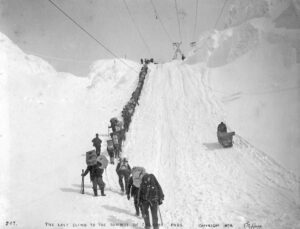 incorporated in 1959. Probably some of the best things that could have happed to Fort Yukon was its newly established value as a tourist destination, which came about in the late 20th century, due in part to its extreme northerly location and its proximity to Fairbanks. I’ve been to Alaska, but not to this area. Alaska holds a lifelong interest for me, but I’m not sure I could be a full-time resident of the area. Still, I’d like to visit again, and this time maybe in the Winter.
incorporated in 1959. Probably some of the best things that could have happed to Fort Yukon was its newly established value as a tourist destination, which came about in the late 20th century, due in part to its extreme northerly location and its proximity to Fairbanks. I’ve been to Alaska, but not to this area. Alaska holds a lifelong interest for me, but I’m not sure I could be a full-time resident of the area. Still, I’d like to visit again, and this time maybe in the Winter.

 With summer comes thunderstorms in many areas of the world. Lake Maracaibo in Venezuela has been listed as the lightning capital of the world, with storms lighting up the skies almost 300 nights each year, according to a NASA study. Lightning kills approximately 73 people a year in the United States alone. Most strikes kill one victim at a time, but on June 26, 1807, lightning hit a gunpowder factory in the small European country of Luxembourg, and that day, the lightning killed more than 300 people. The Luxembourg disaster may have been the deadliest lightning strike in history.
With summer comes thunderstorms in many areas of the world. Lake Maracaibo in Venezuela has been listed as the lightning capital of the world, with storms lighting up the skies almost 300 nights each year, according to a NASA study. Lightning kills approximately 73 people a year in the United States alone. Most strikes kill one victim at a time, but on June 26, 1807, lightning hit a gunpowder factory in the small European country of Luxembourg, and that day, the lightning killed more than 300 people. The Luxembourg disaster may have been the deadliest lightning strike in history.
Luxembourg was occupied by Napoleon’s army in 1807. The French dictator used the country to stockpile weapons and ammunition, or shall we say hide them from the view of those he didn’t want to know about them. Napoleon built a number of underground bunkers for this very purpose. In the southern part of Luxembourg city of Kirchberg, a fortress built in 1732 was used as an armory. It was here, on June 26, when lightning struck the fortress that disaster followed. When lightning struck, the ammunition located in the structure ignited on contact. The explosion that followed was massive. The blast took out two entire blocks, which caused several other fires to rage nearby. The London Times later reported, “This city has been plunged into the greatest consternation and distress.” This strike has been considered one of the worst lightning disasters of all time…mostly because of the number of lives lost.
The earth receives 8 to 9 million lightning strikes every day…wow!! The United States alone sees about 70,000 thunderstorms a typical year. In those storms, approximately 20 million lightning strikes are produced in a year. Lightning can create beautiful shots for photographers, and I doubt if there is one person who can honestly say they are not enamored with the beauty of lightning, but the thing to understand is that a bolt of lightning can reach 50,000 degrees Fahrenheit in that instant when it strikes. In that beauty hides an average of 100 million volts of electricity, and a lightning bolt can be as much as five miles long. Lightning can strike from a storm that is miles away, so when you hear that rumble, it really is time to seek shelter. Of course, you can and should act in a preventative way when it comes to lightning safety. Keep an eye on the forecast and plan with the weather in mind, especially if those plans were going to take you near the water. Beaches are dangerous because lightning tends to strike the highest object, and water is a good conductor of electricity, so you don’t want to be 
 in it. If someone nearby does get hit by lightning, remember that the lightning victim doesn’t hold the electric charge. Call 911 and begin first aid right away. About 90% of lightning victims survive, but they need immediate medical attention. Remember, that while lightning is beautiful, it is best viewed from a safe place indoors.
in it. If someone nearby does get hit by lightning, remember that the lightning victim doesn’t hold the electric charge. Call 911 and begin first aid right away. About 90% of lightning victims survive, but they need immediate medical attention. Remember, that while lightning is beautiful, it is best viewed from a safe place indoors.

 Since my daughter, Amy Royce’s family moved to Washington state, my grandson, Caalab Royce has really enjoyed exploring the area. When he first moved up there, he would go out walking the trails for hours, and on the visits we have made to see them, he has often hiked with us. Of course, he isn’t the only one that hiked, but he does enjoy doing it what he can. Caalab also likes to go on drives and listen to music. That isn’t surprising, since Caalab and his dad, Travis Royce “jam” with a group of friends every week. Their band is something they really enjoy. Personally, I think they are very good.
Since my daughter, Amy Royce’s family moved to Washington state, my grandson, Caalab Royce has really enjoyed exploring the area. When he first moved up there, he would go out walking the trails for hours, and on the visits we have made to see them, he has often hiked with us. Of course, he isn’t the only one that hiked, but he does enjoy doing it what he can. Caalab also likes to go on drives and listen to music. That isn’t surprising, since Caalab and his dad, Travis Royce “jam” with a group of friends every week. Their band is something they really enjoy. Personally, I think they are very good.
Another thing Caalab shares with his dad is woodworking. They both like building things, especially with wood. The two are really best friends, and they are always doing 
 “some kind of man stuff” according to Caalab’s sister, Shai Royce. Caalab also helps with Travis’ backyard projects. Recently, the part of the fence blew down, so they built a new fence on that whole side. Travis and Amy love having a beautiful backyard oasis, and Caalab has been a big help to his dad in that respect. Caalab helped dig the ponds and lay the patio bricks.
“some kind of man stuff” according to Caalab’s sister, Shai Royce. Caalab also helps with Travis’ backyard projects. Recently, the part of the fence blew down, so they built a new fence on that whole side. Travis and Amy love having a beautiful backyard oasis, and Caalab has been a big help to his dad in that respect. Caalab helped dig the ponds and lay the patio bricks.
Travis holds a monthly poker night that Caalab always goes to. He likes to play poker and enjoys getting together to play. The whole family likes to visit the local casinos, and I don’t know how, but they win a lot!! I haven’t really asked they how much money they spent or lost, but I’ve seen the wins, and they are impressive. The family likes to attend the Bellingham Bells baseball games. They often go with friends, but Travis and Caalab are always “two of a kind” there, as are they in most ways. They are both so funny. They love a good joke…and a good prank, and while Shai 
 doesn’t always appreciate Caalab’s antics, she forgives him for being a pest, because she loves her brother.
doesn’t always appreciate Caalab’s antics, she forgives him for being a pest, because she loves her brother.
Shai often dog sits for some friends, and Walter, one of the dogs absolutely loves Caalab. Walter waits for Caalab to come home or to get up in the morning. Caalab is Walter’s best friend. Hahahaha!! It’s not surprising, because Caalab has always loved dogs and they have all loved him. I think Caalab likes that Shai dog sits as much as she does. Today is Caalab’s birthday. Happy birthday Caalab!! Have a great day!! We love you!!

 Much has happened in the first year of my grandson, Josh Petersen and his wife, Athena’s marriage. In addition to their first son, Justin, they now have a second son, named Axel, and a baby on the way. Josh and Athena are very family oriented. They love kids and have said they want four or five, so this newest addition isn’t a surprise. These “kids” are so happy and full of excitement every day. For them, life is an adventure, and they can’t wait for the next chapter.
Much has happened in the first year of my grandson, Josh Petersen and his wife, Athena’s marriage. In addition to their first son, Justin, they now have a second son, named Axel, and a baby on the way. Josh and Athena are very family oriented. They love kids and have said they want four or five, so this newest addition isn’t a surprise. These “kids” are so happy and full of excitement every day. For them, life is an adventure, and they can’t wait for the next chapter.
Josh and Athena met when they were in middle school, but it wasn’t until much later, that they knew that this was forever. Their love is real and true, and even if they knew that back in middle school, they couldn’t have married, so it’s just as well that they found out later in life. They truly are perfect for each other, and they 
 couldn’t be happier with their lives…or their family. Not everyone can say that they have known their spouse for much of their lives, but it is really cool when they can, and when they are still in love even after their school days are long over. These kids have their priorities straight…God first, family second, and self, last. I love that they are dedicated to God and family. I love seeing their faith in action.
couldn’t be happier with their lives…or their family. Not everyone can say that they have known their spouse for much of their lives, but it is really cool when they can, and when they are still in love even after their school days are long over. These kids have their priorities straight…God first, family second, and self, last. I love that they are dedicated to God and family. I love seeing their faith in action.
They love taking the kids to the different parks and even the mall to play on the toys there. At this age, the boys are happy with whatever toys are around, and that, in turn makes Mommy and Daddy happy. That will end, of course, as the boys start hearing about the latest and greatest new toys, but for now, Josh and Athena can enjoy the simplicity of having young kids. Of course, it helps that the parents have no problem playing with 
 the kids, even going into the maze toys. Let’s face it, most of us couldn’t even get in there. I think Josh and Athena are really big kids at heart.
the kids, even going into the maze toys. Let’s face it, most of us couldn’t even get in there. I think Josh and Athena are really big kids at heart.
Josh is a Fire Extinguisher Tech for All Out Fire. He works very hard so that Athena can stay home with their kids and their coming little one. Athena is an excellent mommy and the boys are very blessed to have her for their mom. She and the kids have great days of reading and learning…and playing, but when their daddy gets home, they are all so happy to see him. These boys are Daddy’s Boys, in the evening anyway. During the days, it’s all about Mommy. They family is all about family and growing in love every day. Today is Josh and Athena’s first anniversary. Happy Anniversary Josh and Athena!! Have a great day!! Congratulations!! We love you!!

 My grandniece, Maya Stevens is the second child of my nephew, Garrett Stevens and his wife Kayla, and according to my sister and Maya’s grandma, Alena Stevens, Maya is very much a second child. In case you didn’t know what that is, it’s all about the differences between raising an oldest child and raising a youngest child. Maya can be very brave…on some things. On others…not so much. Maya will jump right into the pool, with or without a life jacket. That means of course, that her parents must have an “eagle eye” anytime they are near a pool. The reality is that Maya really loves to swim. She loves the pool and their trampoline. Especially when her daddy plays with her and jumps with her. When it comes to the slide into her pool, just try holding her back. She goes down the slide at full speed by herself laughing at the bottom with a splash.
My grandniece, Maya Stevens is the second child of my nephew, Garrett Stevens and his wife Kayla, and according to my sister and Maya’s grandma, Alena Stevens, Maya is very much a second child. In case you didn’t know what that is, it’s all about the differences between raising an oldest child and raising a youngest child. Maya can be very brave…on some things. On others…not so much. Maya will jump right into the pool, with or without a life jacket. That means of course, that her parents must have an “eagle eye” anytime they are near a pool. The reality is that Maya really loves to swim. She loves the pool and their trampoline. Especially when her daddy plays with her and jumps with her. When it comes to the slide into her pool, just try holding her back. She goes down the slide at full speed by herself laughing at the bottom with a splash.
As brave as Maya is when she’s swimming, she is still shy with new people. There’s nothing wrong with that, but when it’s someone you want to have your child grin for, that “stranger danger” thing can be problematic. 
 Still, if you have to make a choice, I figure it’s best to err on the side of caution. Maya loves her Papa Mike, my brother-in-law’s attention, but she doesn’t want him to hold her yet. She’ll call out to him and say, “Papa watch!” or “Hi Papa!” Still, if her mom or dad are around, she only wants them. She is very much a “Mommy and Daddy’s Girl.” That’s ok too, but it will change as time goes on, and she feels more comfortable around other family members, she will be very social, of that I have no doubt.
Still, if you have to make a choice, I figure it’s best to err on the side of caution. Maya loves her Papa Mike, my brother-in-law’s attention, but she doesn’t want him to hold her yet. She’ll call out to him and say, “Papa watch!” or “Hi Papa!” Still, if her mom or dad are around, she only wants them. She is very much a “Mommy and Daddy’s Girl.” That’s ok too, but it will change as time goes on, and she feels more comfortable around other family members, she will be very social, of that I have no doubt.
Maya loves her big sister, Elliott, but she will not be pushed around by her. Elliott is a good big sister, and pretty careful with her little sister, but Elliott pushed her down once and Maya came up swinging! She packs a punch. Of course, her little hands don’t really hurt, but she was gonna fight! She had to show her big sis that she was no doormat. The girls get along very well for the most part though. Maya loves to be chased by Elliott and they 
 chase each other around the house for 20 minutes or so, or until Elliott traps her in a corner. Then it all becomes a “giggle fest” or a “gleeful screaming match” anyway.
chase each other around the house for 20 minutes or so, or until Elliott traps her in a corner. Then it all becomes a “giggle fest” or a “gleeful screaming match” anyway.
Maya is a very smart little girl. She is learning to talk, and she speaks pretty plainly. She loves to have fun. She’s always laughing or smiling. Every picture I see of her she is smiling, if she isn’t laughing, that is. Maya is a very happy little girl and a joy to be around. She and her sister are best friends, and they love their cousins Brooklyn and Jaxxon. In fact, Maya always wants to be held by Brooklyn when they are together. Today is Maya’s 2nd birthday. Time sure flies. Happy birthday Maya!! Have a great day!! We love you!!

